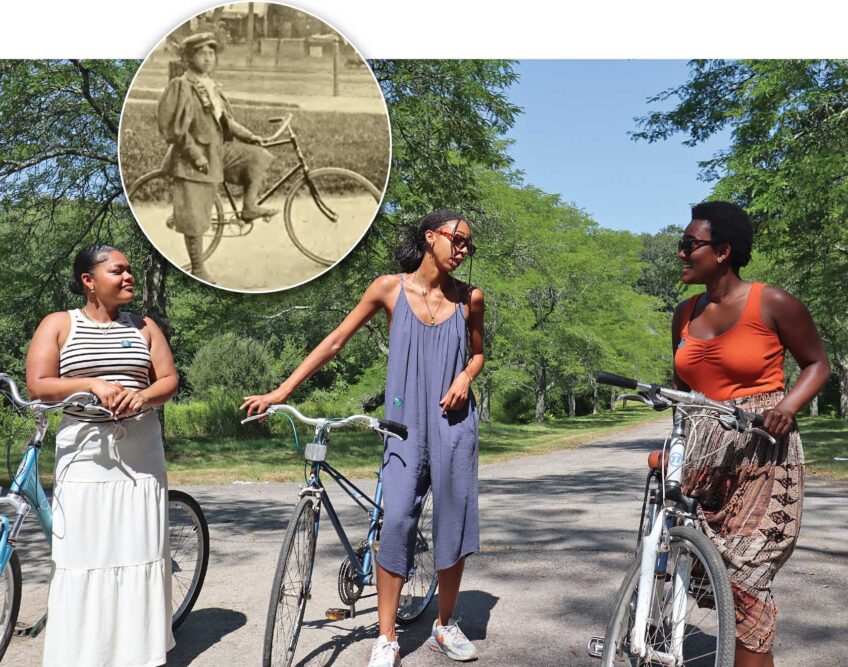Banner [Virtual] Art Gallery
Paul Goodnight in conversation with artist Hakim Raquib
![Banner [Virtual] Art Gallery](https://baystatebanner.com/wp-content/uploads/2023/10/Akim-Raquib-DANCING-IN-THE-STREET-1-964x1024.jpg)
View Banner Art Gallery
Sponsored by MFA/Boston
This is the first in a weekly series presenting highlights of conversations between the Boston artist Paul Goodnight — whose work has been featured in such films as “Ghost” and “Gone Baby Gone” and on many television programs — and some of New England’s leading Black visual artists. In this week’s podcast, Goodnight interviews photographer Hakim Raquib, who’s now exploring the digital art medium. The interview has been condensed and lightly edited.
Paul Goodnight: Hakim, why is art important to you?
Hakim Raquib: Well, it speaks to me. I found it to be more of a way of expressing who I am and a journey into my life. But art has always been an exploration. Since I was a child, my mother always had art in the house. So, I always saw beautiful things. We had Life magazine in the house. We had Ebony. We were always introduced to images, beautiful people and different spaces. There was an eagerness to get more involved with that lifestyle. Art was spiritual. I needed it.
Who have been your three most inspirational people?
There was a photographer who’s now deceased named Rudy Robinson. He was a mentor in many ways. He [told] me, “You can do this, but you have to be consistent.” He was the first person who really spoke to me about a career.
Then there was my mother, who supported my efforts. She was a great traveler, and, of course, photography and traveling go hand-in-hand.
And thirdly … I would put many people on that list: Roy DeCarava, Gordon Parks, Irving Penn. I think just being around other artists — yourself, when I met you, and the people at AAMARP [the African American Master Artists in Residence Program at Northeastern University].
I see your work, Hakim, as the trifecta. One, we know that what we do doesn’t move — but it has to move you and the audience you’re delivering to. Two, I recognize when I see your work that you challenge yourself. You do a good job of exploring the media and how far you can take it, and you keep on learning. And third, I see that your work is very entertaining in one way or another. Tell me a little bit about your process.
The process is to think it through, basically. It depends a lot on where I point the camera and what I’m looking at. Photographs don’t lie. It’s who’s behind the camera and where you point it. So I try to reinvent the image in some ways — to transform it and make it suit my moment and what I’m thinking. I try to make the photograph or the image more of a story, so that the viewer can bring his or her experience to the image, interpret bits and pieces and get something from it.
I do Photoshop, the digital medium. I have a whole plethora of tools there that I can use to accentuate and create color, feeling and style. I think a lot of my work is very intuitive in the end. Using Photoshop, you can literally say anything you want, once you master it to some extent. And you can do it beautifully.
How does your imagination work for you, or, I should say, your subconscious?
I dream a lot. That’s a reference. [And] my imagination was sparked by the new medium. I spent some time reconsidering how I was going to approach my medium again. I had a new quality of magic to explore the image in many different ways.
How have your travels influenced your work?
Everywhere I’ve gone, I’ve learned. My first trip to Africa was as a photographer for Oxfam America. We were going to landlocked countries — Zambia, Zimbabwe, Mozambique — to look at some of the projects there, small projects in irrigation, water systems, etc.
In Zimbabwe, [I saw] the great Zimbabwe ruins. These are magical stone structures that were built by hand without mortar over a millennium and they’re still standing. That blew my mind. Learning about the world around you — the excitement always got me going.
Have you had people who wanted to be mentored by you?
Yes. I think it’s important to work with young people. I’ve always worked with young people off and on as a consultant. I’ve learned from them as well. One of the reasons I got into digital art was one of my students said it’s something that’s going to happen, so you might as well jump on it.
At an early age, I was empowered by people who were around me, like [AAMARP founder] Dana Chandler — just totally empowered. “You’ve got to do this. If you believe it, do it,” he said. I think I want to share that history and the shoulders that I stand on. These are important people still —like [the late local painter and illustrator] Milton Derr, [from whom] I totally learned a lot about perspective and use it all the time in my work.
View Banner Art Gallery









